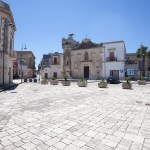Take a bottle of extra virgin olive oil, smell its aroma and try it, pouring it on a spoon or tasting it on a piece of bread. A few simple gestures will give you back the essence of Salento, a mix of tradition, taste and nature.
With a soft taste with a pleasantly bitter aftertaste and some spicy notes, olive oil is, together with wine, the excellent product of Salento.
FEATURES
Salento olive oil has a color ranging from intense yellow-gold to dark green. The low acidity (not more than 1%) guarantees goodness and duration of conservation. The harvest usually is done by hand, but also with mechanical tools to collect the fruit before it touches the ground.
Once on the ground, in fact, it would be attacked by micro-organisms, which would increase its acidity. In addition, the fruit on the tree has a high number of antioxidants, daily allies against cellular aging and the prevention of various diseases 🙂
THE PLANT
The olive tree is an evergreen plant, high from three to fifteen meters, able to survive in low-fertile and arid land. A single tree can produce from fifteen to forty kilos of olives, or from three to eight kilos of oil. In springtime and in summer it must have a sufficient water supply.

THE VARIETY OF SALENTO OLIVE
Salento olive oil is DOP (Protected Designation of Origin) and it is obtained from the Cellina di Nardò and Ogliarola olives varieties (about 60%). The remaining 40% derives from other varieties present in the olive groves.
HISTORY
The production of olive oil takes origin from the past. Messapi were the first to cultivate the trees, in the first millennium BC. Later, Basilian monks started a thriving market outside Salento borders.
PROCESSING
The process that leads to the transformation of the olives is a fascinating and ancient path that requires several phases.
Harvest
The harvest usually starts between November and December, when the olives ripen.
Harvesting operations can be done by hand (more widespread practice) or by mechanical means.
Manual harvest can be done in three different ways:
- the grazing: the olives are detached from the branches by hand;
- the fronds are beated with sticks in order to make the olives fall;
- the spontaneous fall of the olives on the nets under the trees and then picked by hand or with the help of brooms.
Then the olives are placed in aerated boxes and brought to the mill for the extraction phase.
Wash
The olives are washed in water.

Crushing / Gremolatura
The olives are reduced to paste during the crushing phase. Gremolatura consists in slowly and constantly mixing in order to break the oil-water emulsion and to favor the aggregation of the oil droplets contained in the olive.
Extraction / Juicing
The oil contained in the olive paste can be extracted with different systems,:
- pressure, ie the paste is pressed so the oily must is obteined;
- centrifugation, the pasta is rotated at very high speed in a horizontal centrifuge;
- percolation (sinolea – cold extraction), the oil adheres to the steel blades immersed in the paste, thus separating the solid part and the water of vegetation.
Chiarificazione
Chiarificazione allows the other substances to be removed from the oil. Now the oil appears turbid. After that, all the substances are deposited on the bottom.

Storage
The olive oil should be stored in the dark, at a constant temperature and without oxygen. Usually they use stainless steel silos.
ALL OVER THE YEAR
To produce high quality olive oil, it is necessary to carry out continuous maintenance procedures for the olive grove.
Pruning
Pruning is the practice of cutting the branches or portions of them no longer productive. It has to be done every four or five years in March and April.
Composting
The olive trees are very sensitive to treatments with plant protection products in too cold periods. Therefore, it would be advisable to distribute the degraded organic fertilizers in the soil.
Ground cleaning
It is necessary to clear the soil from the dry leaves and weeds.
Health state
It is useful to take under control the health status of trees, by checking the presence of insects or diseases.

TOURS / EXCURSIONS
If you want more than tasting the olive oil on traditional dishes of Salento and you’d like to see the places where the processing phases get started, you can take part of excursions among the olive groves or visit some oil mills.
You can take a walk through the olive trees and have a tasting-aperitif in this beautiful villa in Carpignano Salentino, in the hinterland of Salento. It will be a unique experience that will allow you to taste the olive oil of Salento.
For info:
holiday houses–> www.casesalento.com
holiday villas –> www.villesalento.it
e-mail: info@villesalento.it
Mobile –> (+39) 392/0202233 – (+39) 328/4617633












1 Comment